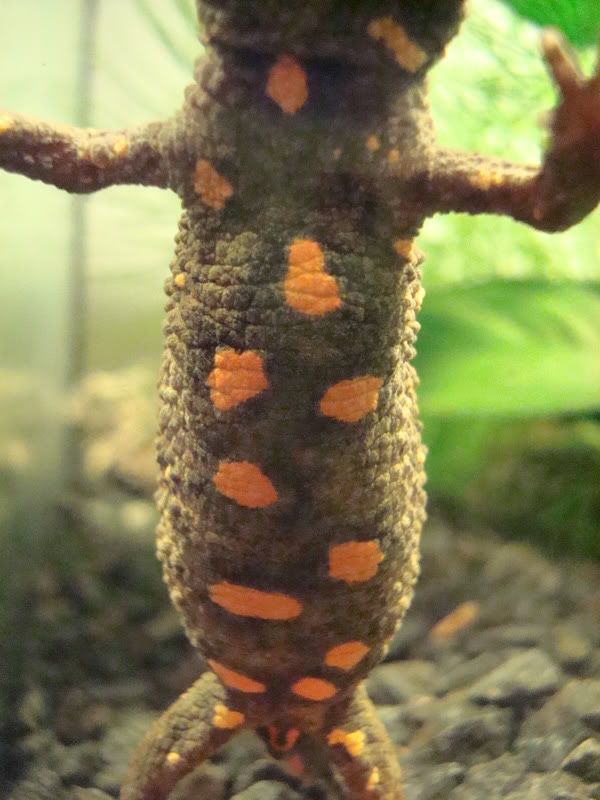According to the descriptive paper, fuzhongensis is more warty than the rest of the Paramesotriton species. Although the paper describing fuzhongensis (Wen 1989) is detailed, that describing chinensis (Gray 1859) is barely more than a paragraph (Gray did not even collect the specimens himself) and is most unhelpful. It does say that the skin of chinensis is 'acutely granular' however. As this was the first species of Paramesotriton described (as Trituroides, I think) there is no comparison to other species.
I do not think that the presence of a small number of orange flecks on the dorsum distinguishes chinensis (I have seen fuzhongensis and hongkongensis with the same flecks).
Allegedly, the fleshy labial fold is a distinguishing feature of fuzhongensis, but I have seen this in several Paramesotriton species, though not quite as fleshy as in fuzhongensis. Paramesotriton fuzhongensis is also supposed to have a crease running from the anterior corner of the eye to the fleshy labial fold (I observed this in my own specimens), which these anmals do not possess. The absence of warts on the lips and to a large extent on the dorsal limb surface in the brown animal would suggest chinensis rather than fuzhongensis.
I would agree that the dark animal (the male) is definately chinensis, and given that the brown animal was in the same batch as the male, and has slightly un-fuzhongensis-ish charactrs (such as the lack of the crease on the face and relatively smooth lips and limbs, as well as smallish belly spots roughly in two lines), and also has smallish, infrequent throat-spots, I would think that it is probably of the same species.
The black animal doesn't seem too thin at the moment, so given some time undistrubed to settle in it may start eating. If not, force-feeding a couple of times may do the trick. Try feeding at night by torchlight, when then newt is more active and more likely to go into feeding mode.
I had a male chinensis that, due to an infected fighting wound on the back, stopped eating and would not start again even when the wound was treated and healed. I used a syringe (without needle, of course) attached to a short length of air-line tubing (about 5cm). I filled the syringe with a small amount of meat-based baby food (about the equivalent of a small normal newt-meal) and squeezed the plunger until the baby food was at the end of the tubing. I then carefully forced the newt's mouth open and inserted the tubing into the beginning of the oesophagus, then squuezed the food into the newts throat, deep enough in to force a swallowing reaction. I did this three times a few days apart and soon after the newt resumed eating and quickly recovered. This is, of course, something to use as a last effort.
Good luck with them.
Chris















